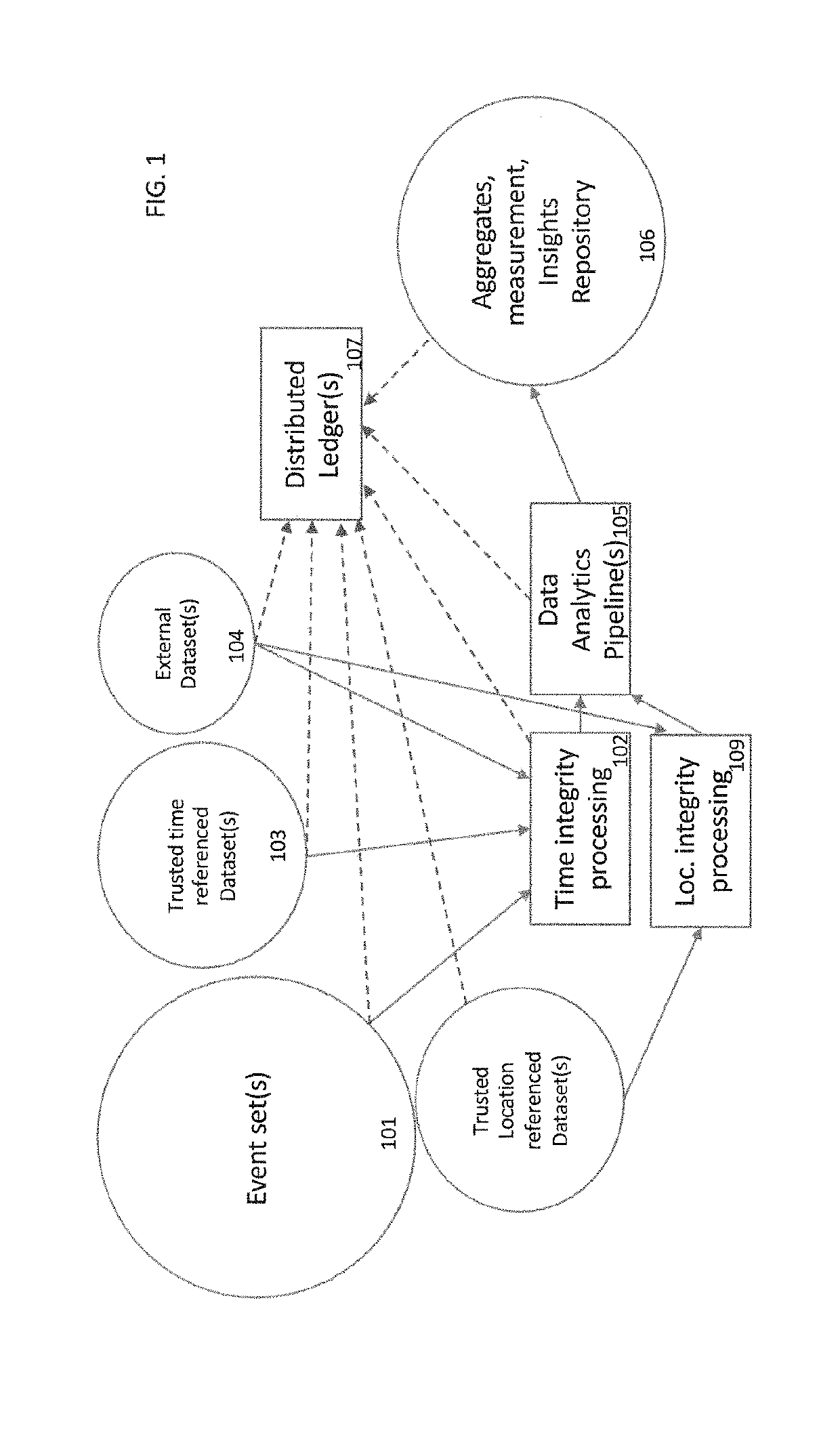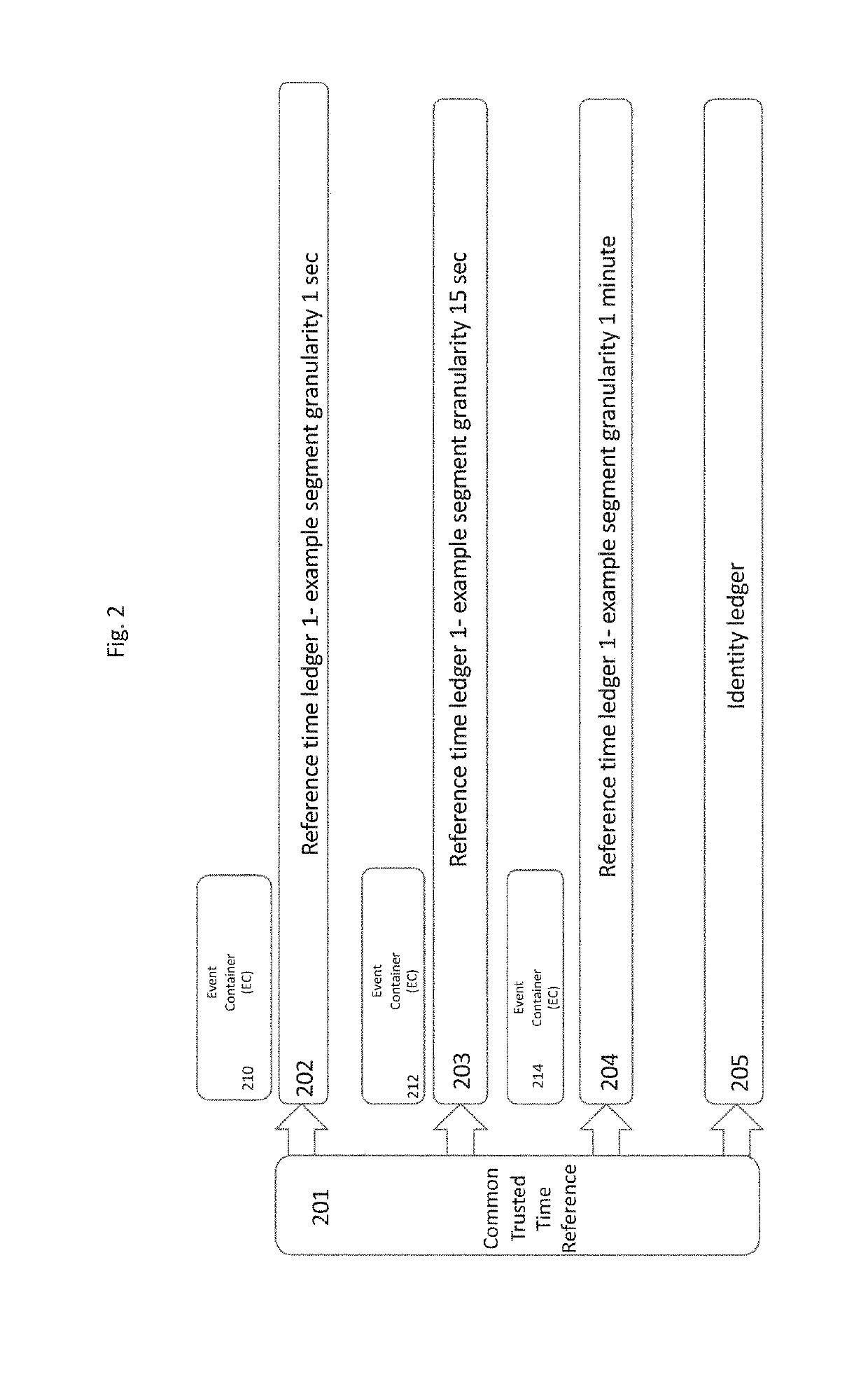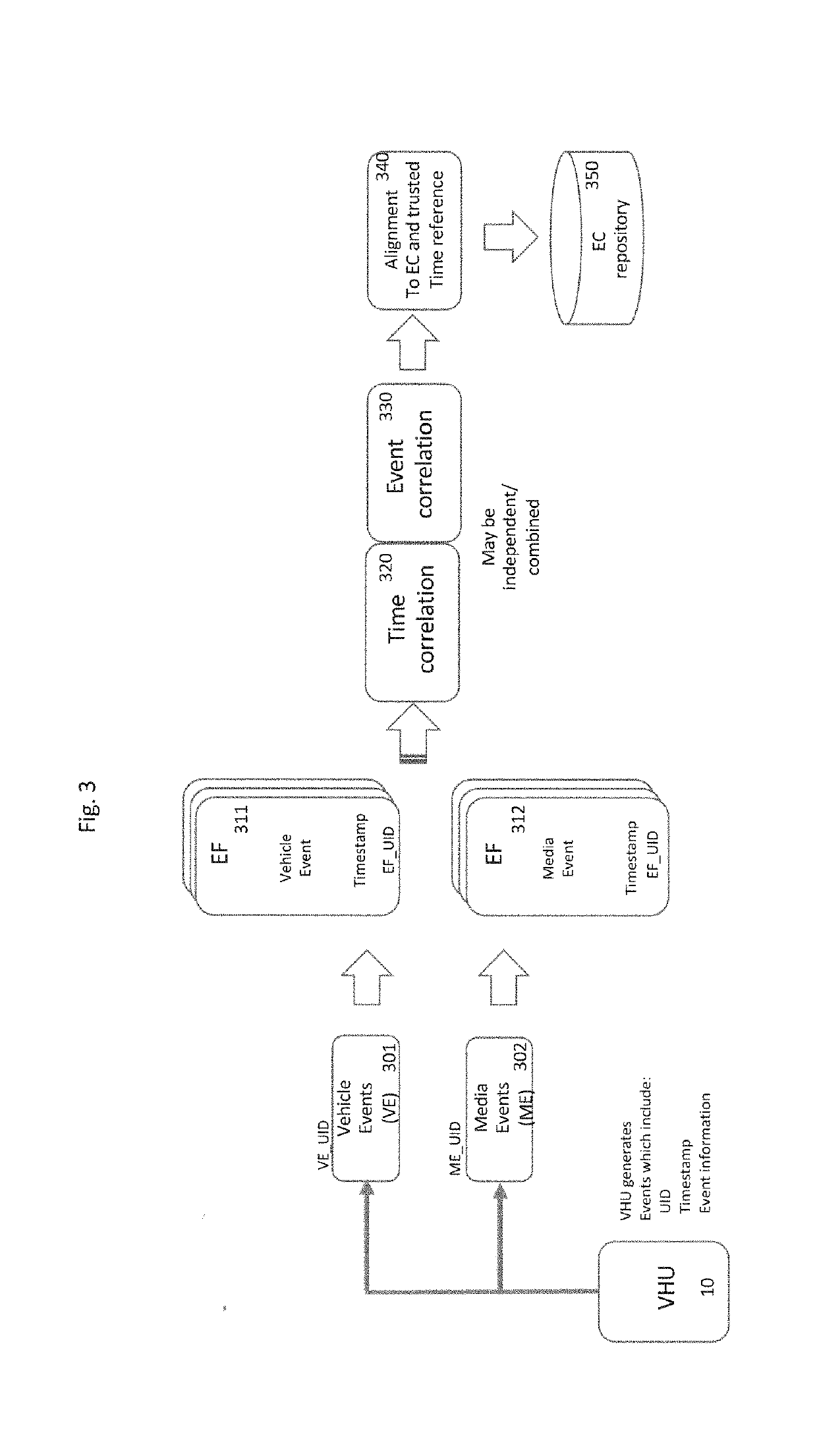However, today there does not exist any ability to actually measure and effectively analyze what people are really listening to, or watching, while in a vehicle—with accurate time and / or
location data tied to a
distributed ledger.
Other approaches have involved the use of expensive specialized measurement equipment added to a
sample number of vehicles.
However, these existing prior art methods have many disadvantages and problems.
As a result, these
estimation methodologies are considered to be outdated and inadequate to meet the current needs of stakeholders because they, for example, suffer from: 1) small participant sample size; 2) high cost of gathering data in this manner; 3) potential for the statistical integrity of the approach to be compromised (whether unintentionally or fraudulently) by the participants; 4) infrequent periodic timing (only several times per year) with significant
lag time between survey and report availability, thus not providing the potential for real-time monitoring and analysis desired by the industry; 5) lack of ability to comparatively measure “
cross channel” audio consumption (e.g. AM / FM radio vs.
Internet Radio, etc.); 6) the lack of ability to measure all types of media consumption (e.g. audio, video, etc.); and at least 7) the lack of the ability to ensure the integrity of the data by immutability tying such data to a
distributed ledger schema.
Despite the foregoing limitations in the methodology used, Nielsen still generated more than $450M from the sale of AM / FM radio measurement data for the US market in 2013 as no viable alternative rating
source data is available.
In a further example, SiriusXM is not able to measure what channels its subscribers are listening to as it is primarily a one-way broadcast via satellites,
In view of the above, there is currently no comprehensive source of data for the accurate measurement of the full spectrum of media content that is actually consumed in an automobile.
The currently available estimates of in-vehicle audio listening are deficient in many ways, including: 1) Not real-time or near real-time (surveys conducted only several times per year with considerable
lag time before reports are available); 2) Do not cover all potential media sources (e.g. can estimate AM / FM radio but cannot estimate SDARS,
internet radio, stored media, streaming media, etc.); 3) Unable to provide “cross-channel” comparison (e.g. between FM & SDARS); 4) Unable to measure content brought in to the vehicle via a connected MP3 player, DVD / Blu-
ray player, smartphone or other
Consumer Electronic (CE) device; 5) Survey-based methodology (rather than actual measurement); 6) Small
survey participant sample size; 7) Significant
vulnerability to bias and fraud; 8) High cost of data collection (both the high cost of administering the survey participants and the high cost of specialized monitoring equipment such as Nielsen's PPM device); 9) Provide minimal geographic location information; 10) Does not include any accurate timing information for correlation with multiple sources; 11) are unable to provide detailed information on which advertising commercials a user heard, how and where they were heard, and whether the user took action as a result of hearing the ad, etc.
Existing approaches using a) survey-based methodologies or b) methodologies requiring specialized equipment that needs to be installed in a vehicle do not provide the potential to meet this objective in a viable and cost-effective manner.
In addition to the aforementioned benefits, the instant system and methodology allows for the
acknowledgement that information received from a vehicle entertainment system is partial in nature, in that such information does not convey the context of the experience of a vehicle's occupants for a media event.
Even the purveyors of systems that track podcasts, one of the most rapidly growing media sources of today, state that listening behavior cannot be monitored.
The foregoing attempts in the prior art fail to meet the needs of the industry, and the various stakeholders thereof.
 Login to View More
Login to View More  Login to View More
Login to View More 


